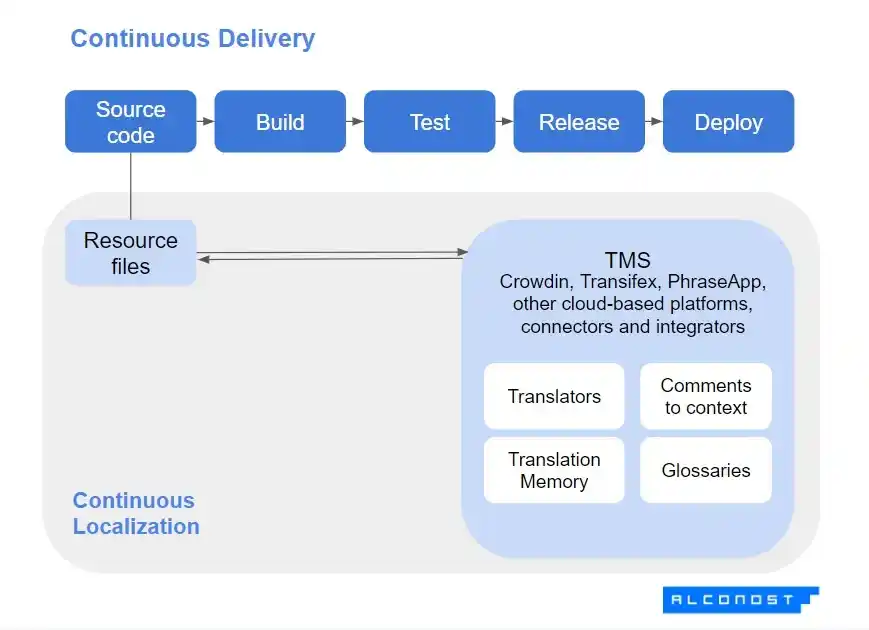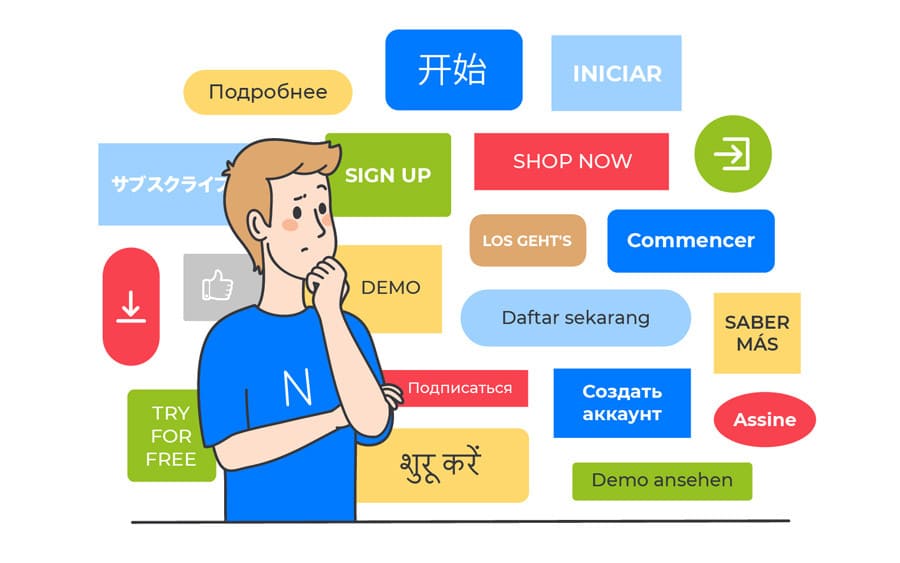Today everything that can be agile is going agile. Localization, as an essential part of product creation, is no exception.
Let’s see how implementing agile localization into your workflow can help improve product quality and streamline your processes.
What is Agile Localization
Localization is often treated as an after-thought. Only when the development and testing are finished do teams start to think about localizing their software. However, when you relegate the localization step to the last minute you risk missing deadlines and, worse, releasing a product not quite ready for worldwide launch.
Agile localization, as anything agile, relates to iterations and close cooperation among different teams. It is a non-linear approach to translation and adapting texts to various regional realities.
The idea here is that the whole localization and translation process is integrated into the product development cycle and becomes its integral part.
The texts are translated at the same time the product is being developed. So, these two processes happen simultaneously.
How does Agile Localization work?
In a traditional waterfall workflow, localization takes place only after the development process is finished. The release of the product depends on the translations — and usually means delays and missed deadlines. Add to this the fact that a lot of work is done manually. This is ineffective, causes a lot of mistakes, and a less than optimal use of human resources.
Agile localization usually uses a localization management system (LMS) or translation management system (TMS). Tools like Crowdin help to reduce the time needed for translations and automate time-intensive processes.
The main advantage of using an LMS or TMS is that the strings of text that need to be translated can be extracted automatically within the translation tool. No more manual string extraction and conversion.
A step-by-step description of the agile localization process looks something like this:
Translation management tools help to fetch the translated content automatically, removing the time-consuming manual tasks that used to dominate the process.
What Makes Agile Localization so Useful?
1. Faster time-to-market
Sometimes delays in product releases happen because of disharmony in internal company processes. However, the agile approach’s whole purpose is to reduce the time spent irrationally and ineffectively.
Faster time-to-market is the dream of every business, and agile localization can help to release your product sooner. As localization occurs simultaneously with other development activities, there is no need to wait until the development is done and only then start translating the app. This way, agile or continuous localization is part of the continuous deployment process.
Even if you don’t have the perfect translation yet, you can release a product with imperfections and then make corrections in subsequent releases. As we know, in an agile climate releases happen quite often. As the saying goes “Better to do something imperfectly than to do nothing perfectly.”
2. Reduced costs
With agile-based translation, specialists localize only new or recently updated strings. This saves the client money as texts don’t need to be retranslated. You can reuse those that were translated before. The upshot is a leaner localization and translation budget.
3. Easier to detect mistakes
This point is also related to the fast delivery and release process. As the translated text can be implemented fast during the release, any errors can be detected earlier as well. The main advantage of the agile methodology in this regard is that the mistakes can be eliminated right in the next iteration.
4. Less manual work
Agile is usually associated with more sophisticated processes without involving too many manual tasks. Using special automated tools makes the process even smoother. There is no need to extract translated strings manually — the transfer between development repositories and localization management systems happens automatically. Pure magic!
5. Quicker localization testing
Testing of localized texts and elements is essential. And it’s better if you plan and do it earlier than the night before release. Localization testing includes the checking of crucial elements: relevance of units of measurement, string length, cohesiveness of style, and the general completeness of the translation.
What about the challenges?
1. Context is everything
One of the challenges is potential turnaround in translation team members. It can happen that new translators aren’t familiar with the subject matter, and won’t understand the context. This issue can be addressed effectively with the help of glossaries and product knowledge bases. Today, the majority of tools allow creation of custom term glossaries.
Another great example of how to deal with context-related issues is the case of Clue app localization. The localization crew was able to quickly get the context, since the Clue team provided them with app screenshots directly in the TMS. An easy-to-implement and effective solution!
If you’re using placeholders to save text elements, a short description of placeholders can also be very helpful. This makes it possible to avoid confusion when a placeholder is considered to be wrongly related or unrelated to the previous piece of text.
2. Great teamwork
As agile means close collaboration, you need teams that are able to communicate fast and effectively with one another. If the developers work separately from the rest of the team, processes might not get synchronized. And this can lead to huge delays in the product release.
3. Not as fast as you want
Yes, agile localization is faster than the waterfall method. However, you might be expecting too much from it. If you need to localize your product into 20 languages, usually you have native speakers all over the world. That means different time zones. And so it’s almost impossible for changes to happen at a glance, and you need to account for turnaround time.
Getting ready for agile localization
To make it possible to introduce agile localization into your workflow, your whole development lifecycle needs to be ready for agile. The whole shtick of the agile approach is an immediate response to changes.
It’s true that you need to be ready for agile processes inside your company. However, when you become an agile evangelist, all the processes can become faster and easier for your business. Agile localization is the way to make translating tasks keep up with the whole development pace.
Need help with translation or localization?







